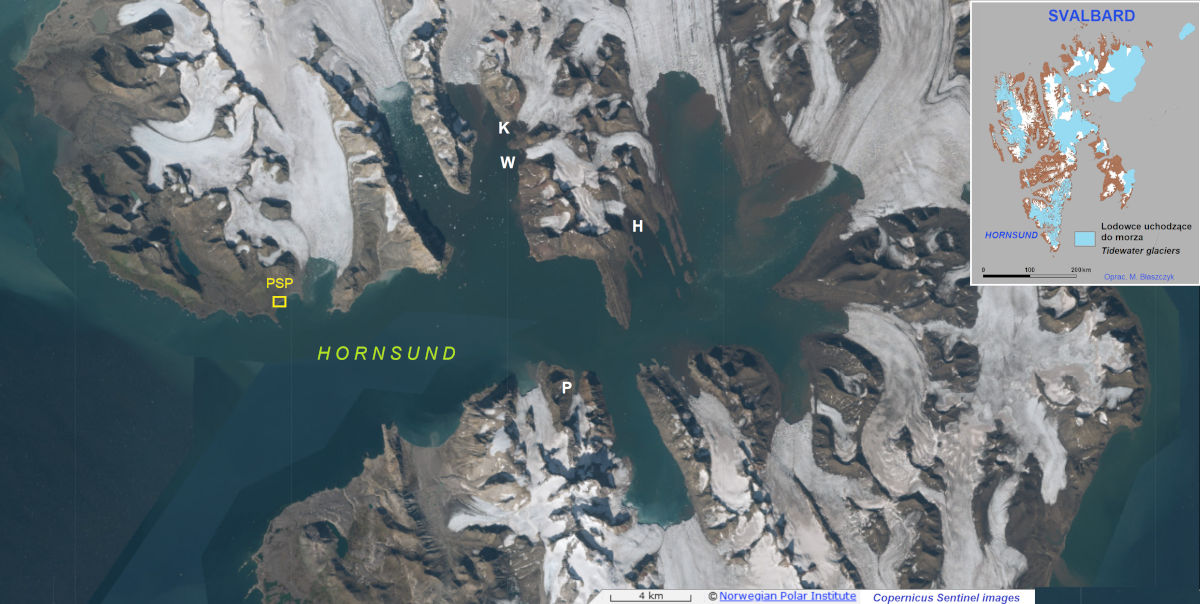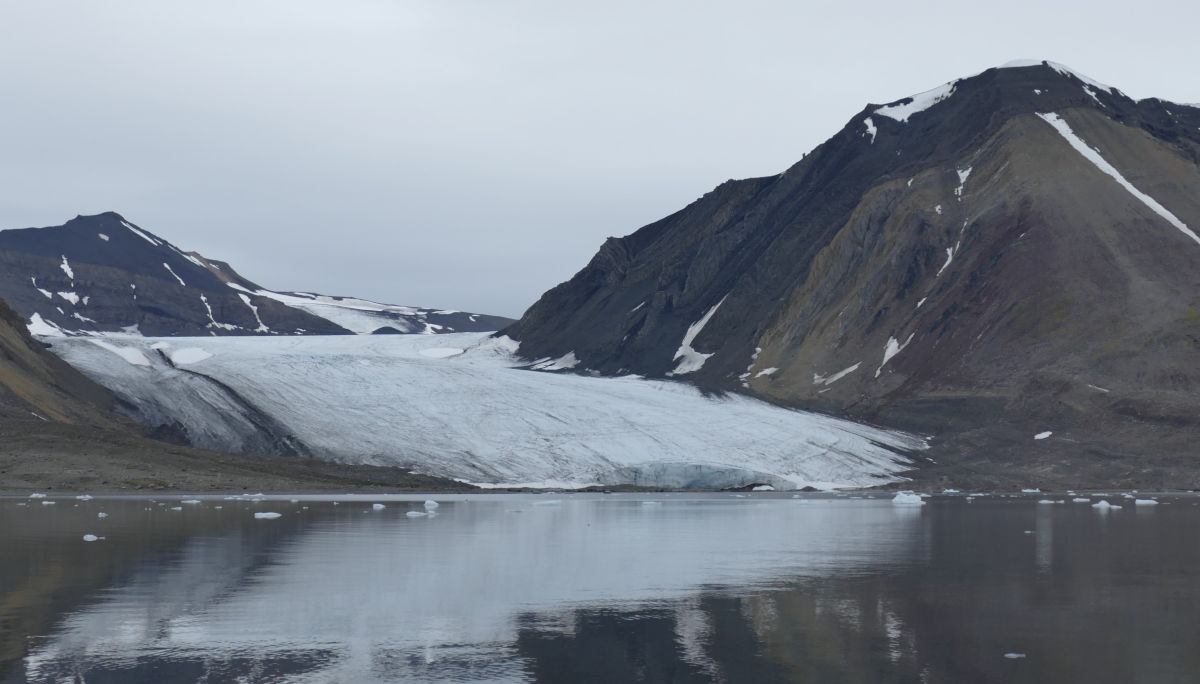Climate warming of the Arctic causes a significant decrease in the ice mass of tidewater glaciers as a result of enhanced superficial melting and more intense iceberg calving to the sea (frontal ablation). Quantification of the frontal ablation of the Arctic glaciers is a challenging research task. It is very important for a more precise assessment of the global sea level rise and inflow of fresh water into fjords. Total ablation of the Arctic glaciers is the most intense in Svalbard. As an implication part of their termini retreats onto land and calving stops. The course of this process and its consequences for the glaciers themselves and polar environment alteration are not properly known. A better understanding of mechanism of such changes has crucial importance for the prediction of the evolution of Svalbard glacierization in the future as a model for other regions and in the geological past.
The aim of the project is an indication of factors driving the speed of recession of marine-terminating glaciers to the land. Studies of selected tidewater glaciers of southern Svalbard are leading to a recognition of the mechanisms of this process in the context of the entire Arctic. The Authors of the presented study were prof. dr hab. Jacek A. Jania, dr Michał Ciepły i mgr Aleksandra Osika.
The first stage of this project was finalising the work of an international team initiated by the Centre for Polar Studies, University of Silesia in 2016. The goal of this group was to quantify the frontal ablation of Arctic and Subarctic tidewater glaciers (excluding the Greenland Ice Sheet). In 2022, the overview paper was completed, showing for the first time values of frontal ablation, its spatial distribution and changes in the period 2000-2020 for the Northern Hemisphere (William Kochtitzky, Luke Copland, Wesley Van Wychen, Romain Hugonnet, Regine Hock, Julian A. Dowdeswell, Toby Benham, Tazio Strozzi, Andrey Glazovsky, Ivan Lavrentiev, David R. Rounce, Romain Millan, Alison Cook, Abigail Dalton, Hester Jiskoot, Jade Cooley, Jacek Jania, Francisco Navarro, 2022: The unquantified mass loss of Northern Hemisphere marine-terminating glaciers from 2000–2020. Nature Communications (https://doi.org/10.1038/s41467-022-33231-x). In total, 1496 tidewater glaciers were analysed. Results demonstrate that their frontal ablation transfers of 44.47 ± 6.23 Gt a−1 of ice to the ocean from 2000 to 2010, and 51.98 ± 4.62 Gt a−1 in the period of 2010-2020. Ice discharge in both studied decades was equivalent to 2.10 ± 0.22 mm of sea-level rise. They show also that 49 glaciers have retreated from the sea to the land in the first decade of the 21st century and in the decade 2010-2020 as many as 120 glaciers. Such results are giving important context for the new project and indicate the scale of the phenomenon in the Northern Hemisphere.
In the project’s second stage, more detailed studies on mechanisms of the transformation process of selected Svalbard tidewater glaciers into land-based ones were initiated. In the summer season of 2022, the field verification of the satellite data on glaciers recently retreated on land was done in Hornsund Fjord for glaciers: Wibebreen, Hyrnebreen, Petersbreen and for comparison for Kvalfangarbreen (which is close to the complete recession on land). The depth of embayments near fronts of selected glaciers was surveyed by the monopulse-echosounding, as an initial data. Observations of glacier meltwater outflows to the sea were done. Archive remote sensing data and high-resolution satellite images together with the data obtained in the field will use for quantitative analysis of factors affecting the studied recession process. The preliminary results show that a decrease in the glacier thickness, reduction of the influence of contact sea water with the ice cliff, and slower flow of glacier tongue towards shallower sea may play a leading role in the intensity of the recession. The effects of such studies will provide data for a pilot publication and a background for the preparation of a new project proposal related to the modelling of the recession processes.
Reference: https://doi.org/10.1038/s41467-022-33231-x
Note author: J.A. Jania







